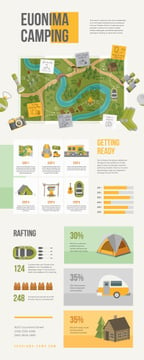Bell tents are ending up being increasingly preferred as versatile, fashionable sanctuaries for camping and glamping. But what's the history behind this enduring style?
How heavy should your backpacking tent be?
Henry Hopkins Sibley patented the single-pole cone-shaped tent that we know as a bell outdoor tents. Nonetheless, he abandoned to the Confederacy and never ever obtained his aristocracies.
Ultimately, someone else included short walls to the cone canopy and designed what we currently referred to as a bell camping tent.
Beginnings
The appeal of bell outdoors tents is growing, and they're currently a staple at outdoor camping celebrations and as trendy backyard resorts. Their sizable insides supply a versatile home from home environment that's ideal for family members and groups of pals, while the round layout aids with security in solid winds.
The style of the contemporary bell camping tent can be traced back to military tents used by European militaries throughout the Crimean Battle in 1853-1856. Then, in America, a soldier called Henry Hopkins Sibley patented a similar framework that attracted inspiration from American Tipis.
Both designs are still being used today. However, Sibley outdoors tents vary from their more current cousins because they have side wall surfaces and a raised bigger entryway. Sibley camping tents additionally rely upon a single main post for support that makes them less complex to set up but restricts configuration alternatives.
Function
Bell tents' one-of-a-kind shape and spacious insides make them the optimal choice for a wide variety of exterior tasks. Whether you're hosting a backyard camping celebration, glamping at a remote natural resort or going on a legendary fantasy-inspired adventure, the adaptability of these tents makes certain that your experience will fit and stylish.
The bell-shaped outdoor tents was originally patented in 1856 by Henry Hopkins Sibley, who had actually created the design after observing Native American tipi outdoors tents. Nevertheless, he resigned from the United States Military at the break out of the Civil War, waiving his legal rights to future royalties.
Ever since, the design has actually ended up being a staple of several glamping experiences. These elegant outdoors tents frequently include deluxe bedding and en-suite shower rooms, giving campers the chance to appreciate nature without sacrificing comfort.
Layout
In the modern day, bell camping tents have actually experienced a revival in appeal, as individuals choose a much more immersive outdoor experience. They are made use of in a variety of setups, consisting of outdoor camping, glamping, and occasions. Their distinct form, roomy insides, and reasonably very easy setting up make them a prominent selection for those looking for a stylish, historic style to their exterior experiences.
The distinctive form of a bell outdoor tents creates high ceilings and sufficient headroom, making it comfy to stand in and walk around. In addition, the center pole is not put near the entryway of the camping tent, enabling even more personal privacy and room inside the sanctuary.
The bell outdoor tents layout traces back to an American outdoor tents soldier called Henry Hopkins Sibley, that was motivated by Indigenous American tipi outdoors tents when developing his version of the bell tent in 1856. His design was a significant improvement over traditional army tents, which were difficult to transfer due to their complicated construction.
Materials
In modern times, Bell Tents are crafted from exceptional products that are made for durable longevity. This is why they are a preferred selection amongst leisure campers, festival-goers, and glampers alike.
In the 19th century, an US Army officer named Henry Hopkins Sibley adjusted typical outdoors tents right into what is now referred to as the modern bell tent. He based his style on Native American Tipi structures, adding brief wall surfaces to the main pole frame that made it more secure.
Today, polycotton canvas is an usual product utilized in the building and construction of bell camping tents. This blend of cotton and polyester offers a wide range of advantages, consisting of breathability, remarkable weather condition resistance, and simpler upkeep than pure cotton canvas. This textile is additionally long lasting and abrasion-resistant. It is thicker than many nylon fabrics, nonetheless, which can make it hefty and a lot more costly than normal tents.
Contemporary
In modern, the appeal of Bell Tents has taken off thanks to glamping websites and festivals offering up these sizable camping tents for couples, teams and households to enjoy. The visual allure and durability of these round outdoors tents are interesting lots of campers.
Whether it be rainfall or wind, these camping tents hold their very own against the elements. Commonly, they're made with canvas that is dealt with to safeguard against dampness, mold and UV rays.
Are canvas tents worth the money?
It isn't clear specifically when these camping tents were invented, however it's widely understood that they're a variation of a Sibley camping tent - named after Henry Hopkins Sibley, that adapted the layout of the American Indian tipi. It is believed that whoever included short wall surfaces to Sibley's cone canopy was responsible for the development of the bell tent as we understand it today.
